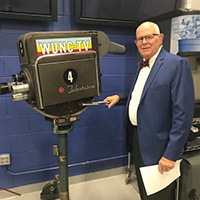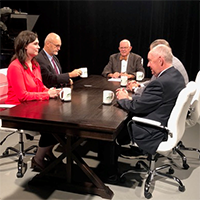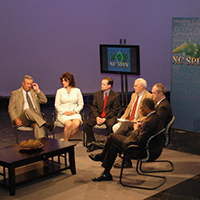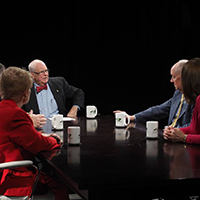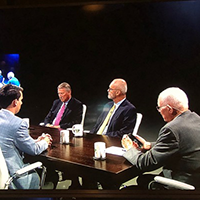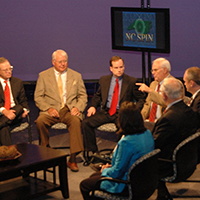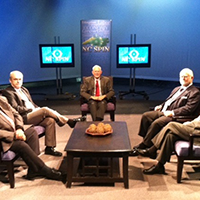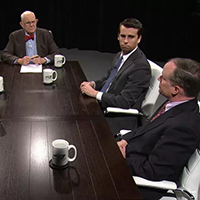What will 2015's economy look like?
Published January 5, 2015
by Mike Walden, William Neal Reynolds professor of Economics, NC State, published in Durham Herald-Sun, January 3, 2015.
Economists receive much attention at the beginning of a new year. Understandably, people want some insight into how the economy will perform. Of course, no economist can predict every individual’s economic outlook. Instead, what we do is try to forecast the general trends in the economy so that households and businesses can make more informed decisions about their personal situations.
Fortunately, there doesn’t appear to be anything on the horizon in 2015 that would give the economy an extreme jolt. We are now in the sixth year from the bottom of the recession, and most economic dials point to continued improvement.
So let me highlight the key barometers of the economy and where I see them headed in 2015.
Production: GDP, or Gross Domestic Product, is an often cited economic statistic. Simply think of GDP as the total amount of production -- in inflation-adjusted dollar terms -- from all sources in the economy. It allows us to add the output of farms, factories and even services into one number.
An annual growth rate of GDP above 4 percent is considered very good; this is the rate we had in several years of the 1990s. In the years since the recession ended, we have had trouble getting a GDP growth rate above 2 percent. But in four of the past five quarters, GDP growth on an annualized basis has been above 3.5 percent, and in two of those quarters the rate has been 4.5 percent or above.
Most economists are now forecasting GDP growth to be 3 percent or better in 2015 – not the best on record but better than we’ve had for most of the years since the recession. Usually, if GDP grows faster, many other good things happen.
Jobs: These good things include jobs. If GDP growth accelerates, so usually does job growth. The job market in both the nation and North Carolina began to turn around in 2010, and in the years since the improvement has quickened. The nation is on pace to add almost 3 million payroll jobs in 2014, and North Carolina companies will add close to 100,000 jobs. As a result, the various measures of the unemployment rate have all fallen.
I project North Carolina will add nearly 120,000 payroll jobs in 2015, and the year-end “headline” jobless rate will go below 6 percent. But it will take more time to get the unemployment rate to the pre-recessionary level of 4.6 percent.
Inflation: All the various measures of the inflation rate -- both from government and private sources and including all products and services bought by consumers – show it hovering around 2 percent for the year. Most forecasts of inflation show it to continue at this level.
Yet some economists think inflation will speed up in 2015 for several reasons. First, bank lending is increasing, thereby pushing some of the money the Federal Reserve created out of banks’ vaults. If the growth of money outpaces the growth of products and services the money buys, a higher inflation rate could result.
Also, with unemployment high, many businesses have not been compelled to give salary increases to workers. Similarly, with buying weak, many businesses have been reluctant to post price increases. As both the labor market and the buying market improve, bigger salary and price increases could put upward pressure on inflation.
Bottom line: Look for inflation to possibly jump to near 2.5 percent for 2015.
Interest Rates: Like inflation, interest rates have been very low. If economic growth picks up in 2015 and is sustained, look for this to change. Interest rates could rise by a half percentage-point. Even then, rates will still be low by historical standards.
While my economic forecasts are generally optimistic, please don’t think we don’t have economic issues. We do, including technological unemployment, gaps between rich and poor households and regions, aged infrastructure, re-skilling workers who have been left behind, public fiscal challenges, international tensions -- and others. But these issues are usually easier to address when the economy is growing faster. Maybe we can make headway on them in 2015.
You decide if the economy of 2015 will bring a “Happy New Year!”
Mike Walden is a William Neal Reynolds Distinguished Professor and North Carolina Cooperative Extension economist in the Department of Agricultural and Resource Economics of North Carolina State University’s College of Agriculture and Life Sciences.
